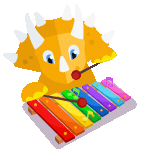From Tones to Twists: Unique Cantonese Sounds Kids Love
Cantonese is full of sounds that make it fun and musical to speak! For kids, these tones and twists feel like a game each sound changing the meaning of a word, and making language learning exciting and interactive.
The Power of Nine Tones
Cantonese is famous for having nine tones, which means the same word can be said in nine ways—with completely different meanings. It’s like turning one sound into many words, just by changing your pitch!
Example:
The sound “si” can mean poetry, try, history, or even death, depending on how it’s said.
Kids often love practicing tones by mimicking musical highs and lows. It’s like a vocal rollercoaster!
Sounds You Don’t Hear in English
Cantonese has fun sounds like:
- ng (as in “ngóh” for “I”) that starts with a nasal sound
- jyut (as in “Jyutping,” the romanization system) with tricky blends
- Quick stops and glottal endings
These sound patterns help kids develop strong listening skills and mouth coordination.
With Dinolingo, kids ages 2–14 explore Cantonese through songs, videos, games, and repetition. Each lesson highlights spoken sounds in real phrases, so children build fluency as they go.
The course is available on web, iOS, and Android, with offline printables for extra practice at home.
Creative Activities to Try
Tone Echo Game
Say a word like “si” in three tones. Your child echoes each one back like a sound mirror. Who can make the funniest face while doing it?
Twist That Word!
Pick a tricky Cantonese word and break it into sounds. Practice each part slowly, then say it faster and faster—like a tongue twister!
With every twist, tone, and giggle, kids build a strong foundation in Cantonese and have fun doing it!
Source:
Start Learning a New Language Today!
Best Language App for Kids.
7-day free trial. Then only $19/month. Cancel anytime.
